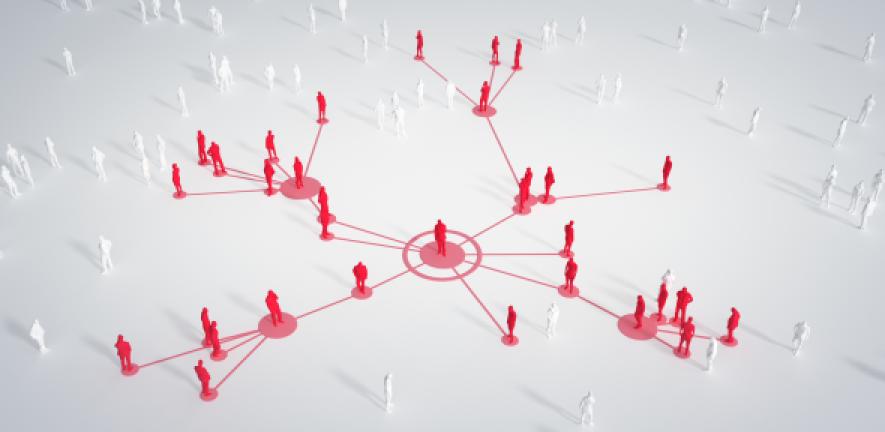
Background
Over the course of the COVID-19 pandemic, modelling has taken centre stage both in forecasting, policy formulation and in informing the public, featuring prominently in the advice given to government in the UK and beyond. The pandemic has had profound influence on social and economic activity, meaning that different policy interventions such as lockdowns and furlough schemes cannot be seen as merely public health policies or as economic policies in isolation. It is therefore important to better understand how policies interact through intertwined economic and disease dynamics and how different policies must be designed to work together.
A successful integration of behaviour into epidemiological models would allow both modellers and policy makers to not only assess how different interventions will likely play out in practice, but also guide the policy making process itself, indicating which policies are likely to lead to greater health and socio-economic wellbeing. Advancements require collective engagement across disciplines, including behavioural scientists, epidemiologists, public health modellers, economic epidemiologists and those involved in public health policy.
In November 2021, the Newton Gateway to Mathematics held a three, half-day virtual event series on ‘Modelling Behaviour to Inform Policy for Pandemics’, which consisted of three main themes:
- Understanding Behaviours
- Integrating Behaviours Into Models
- Using Behavioural Models to Inform Policy.
This event series consisted of talks from experts at the forefront of behavioural science, mathematical modelling and economics. The desire to focus and collaborate on specific problems has led to the formation of the February event.
This event was held virtually and was guided by links with the JUNIPER Consortium and delivered by the RAMP Continuity Network, the follow-on to the Royal Society’s Rapid Assistance in Modelling the Pandemic (RAMP) initiative. It brought together modelling expertise from a diverse range of disciplines to support the pandemic modelling community already working on COVID-19.
Aims and Objectives
Following on from the November 2021 event series, this virtual workshop aimed to bring together the relevant scientific communities (epi-modellers and economic epidemiologists) to work on addressing current problems in modelling behaviour and its epidemiological, economic and societal implications for the COVID-19 pandemic. The following four problems were presented and potential solutions were be discussed.
Problem 1: Determining optimal interventions during pandemics - how do we define the appropriate objective function?
Presenter: Mike Tildesley (University of Warwick)
Abstract: During infectious disease outbreaks, policy makers regularly consult mathematical modellers for policy advice regarding the role of intervention policies in mitigating the risks associated with disease spread. However, in order for models to determine an optimal intervention, it is crucial to determine the objective of control. If policy makers consider that the objective is to minimise the direct public health impacts of the disease, then the optimal policy will generally be one of severe control. However, severe interventions may result in other negative impacts, such as economic losses, educational losses in the event of school closures, non-pandemic health impacts as well as harms to mental health and well-being. In order for models to robustly devise an optimal policy, it is therefore necessary to define an objective function which can be minimised. Defining an objective function is non-trivial as it requires assigning a cost across multiple sectors. However, this problem should be addressed now in order to inform contingency planning for future pandemics.
Problem 2: From pandemic to endemicity: is behaviour over or underweighted in modelling the COVID-19 pandemic?
Presenter: Eili Klein (Johns Hopkins University)
Abstract: The start of a pandemic is declared by the WHO, but the end of a pandemic is less clear. There is no clear point at which a pandemic transitions to being an endemic disease, but in some sense it is when the fear of disease abates to the point that it is not a conscious driver of behaviour for the vast majority of individuals. The abatement of fear happens at different times and at different actual levels of disease for different people, and it is really this fear that drives people's behaviour. One lesson from the COVID-19 pandemic is that it was likely changes in fear of the disease that were the largest drivers of behaviour. While fear was loosely related to the actual numbers of cases/hospitalizations, this was likely not as tightly coupled as was originally believed it would be in economic epidemiological models prior to the pandemic. Understanding how fear drove behaviour over time and across spatial gradients is crucial for understanding both how the end of the pandemic is likely to play out as well as how to prepare for future pandemics and epidemics.
Problem 3: Incorporating economic data into optimal vaccine models.
Presenter: Anup Malani (University of Chicago Law School)
Problem 4: Behaviour and the Dynamics of Epidemics
Presenter: Andy Atkeson (UCLA)
Abstract: I use a model of private and public behaviour to mitigate disease transmission during the COVID pandemic over the past year in the United States to address two questions: What dynamics of infections and deaths should we expect to see from a pandemic? What are our options for mitigating the impact of a pandemic on public health? I find that behaviour turns what would be a short and extremely sharp epidemic into a long, drawn out one. Absent the development of a technological solution such as vaccines or life-saving therapeutics, additional public health interventions suffer from rapidly diminishing returns in improving long-run outcomes. In contrast, rapidly implemented non-pharmaceutical interventions, in combination with the rapid development of technological solutions, could have saved nearly 300,000 lives relative to what is now projected to occur.
Ed Hill put together this very informative thread on Twitter after the event summarising the problems presented as well as this document, which summarises themes and questions arising from both this workshop and the November 2021 workshop.
Programme and Registration
Registration is for this event is now closed.


